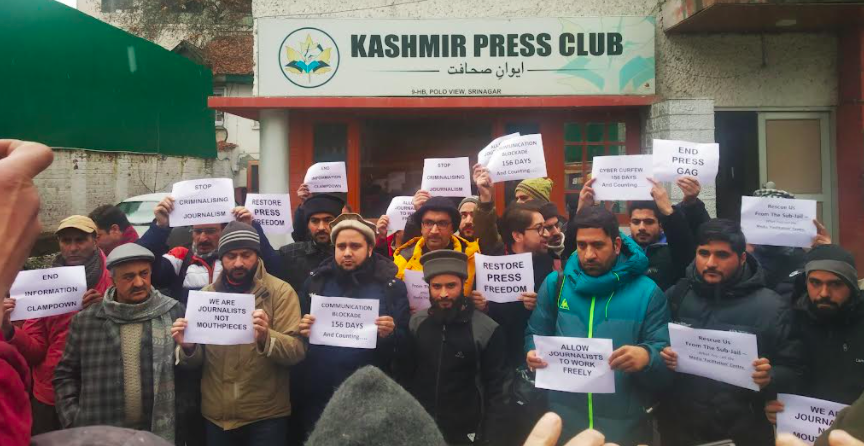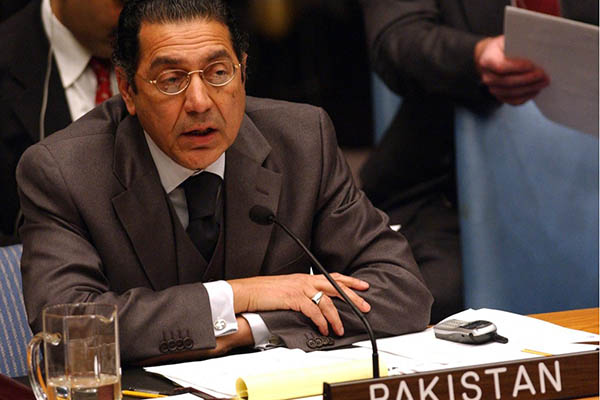
New Delhi: Since the reading down of Article 370, the ouster of journalists from government-allotted accommodation has been used as a lever to pressure those journalists “who the administration felt did not see eye to eye with the government,” a report by a fact-finding committee (FFC) of the Press Council of India (PCI) has revealed.
Besides, government advertisements are being released to newspapers “selectively, based on the ‘line’ and nature of the coverage”, and journalists in the Union Territory have been facing “constant harassment” from security forces in the line of duty.
The FFC further said that, “There is an obvious nexus between the Government Estates Department (in J&K) for removing journalists and news organisations from government-allotted accommodation, and their critical views about government policies.”
This fact-finding team had been set up by PCI chairman Justice C.K. Prasad on September 29 last year, following a complaint from former J&K chief minister and People’s Democratic Party (PDP) leader Mehbooba Mufti. This Committee included Prakash Dubey as its convener and Gurbir Singh and Suman Gupta as members.
In her complaint, Mufti had alleged “intimidation and harassment” of the media by security forces and representatives of the government. She had stated that various journalists had been ‘raided’ by security forces and that several of them had their communication gadgets, like laptops, seized. Many journalists had also claimed that they were subjected to interrogation and harassment.
Mufti had charged that the ouster from government accommodation and being placed on an Exit Control List (ECL), preventing them from foreign travel, were also being used as tools of harassment. She insisted that while the Constitution of India guaranteed freedom of speech and expression for the media, “… freedom of expression had been virtually guillotined…” in the Union Territory.
‘Atmosphere of hostility, conflict palpable during visit’
The three-member committee visited Srinagar in October, 2021 and Jammu in November. Thereafter, it visited Srinagar again where it met and recorded the statements of a large number of journalists, owners of media companies, social workers and NGOs. It also met Mufti, Lieutenant Governor Manoj Sinha, Inspector General of Police Vijay Kumar, Divisional Commissioner for Kashmir Pandurang Pole.
The team said, “The atmosphere of hostility and conflict was palpable in both our visits to Srinagar.”
It referred to to the October 7 killing of school principal Satinder Kaur and teacher Deepak Chand in Srinagar’s Alochi Bagh area by militants claiming to be from the ‘Resistance Front’; the killing of well-known pharmacist, Makhan Lal Bindroo a few days prior to this; and the Hyderpora encounter in which two citizens – dentist Mudasir Gul and businessman Altaf Ahmad Bhat – were shot by the police.
These incidents, the team said, highlighted the deeply fractured situation in the territory of Kashmir. “Conflict and tension between government forces and militants is a fact of daily life, and the people have been forced to live under the shadow of the gun, with all the disruptions that go with it.”
It added, “The members of the media are functioning in this ‘conflict’ atmosphere for quite a while, and are therefore often subject to pressures from the various parties of the conflict.”
‘Those who did ‘balanced’ reporting were targeted,’ claimed journalist
The FFC said while J&K has a population of 13.6 million, it has 259 print publications in Jammu and 166 registered publications in Kashmir. Besides, there are regional television networks and internet-based news channels targeting the populace.
The report said, due to shortage of accommodation and the low income levels of journalists, most of them reside in government-allotted residences.
It quoted president of the Editors Forum, Mohammed Aslam Bhat as saying, “Of the 40 persons who have got notice to vacate government accommodation in recent days, 20 of them are journalists.”
Bhat, who is executive editor of the Kashmir News Service, also said that on October 15, 2020, his publication’s office was sealed without notice, despite it paying the Rs 7,000 for rent regularly and without default. He said even after a year, the organisation had not been allowed to take its material and equipment from the sealed office.
No notice or reason was given for the action, Bhat said, continuing that, “Our (the publication’s) doubt is that we are running news about opposition groups and parties too.”
Senior journalist Yusuf Jameel, too, alleged that “those who did ‘balanced’ reporting were targeted”. He said that he, too, was told to vacate without being given any notice or reason.
The FFC report also looked into the charge that the government was using its advertisements to control and intimidate the media. “Some newspapers, who had earned the wrath of the local administration, found advertising either totally withdrawn or curtailed to a trickle.”
With the private sector and commerce limited in the conflict-ridden UT, the report said the government remained the biggest advertiser. It said through the new media policy, 40% of the funds have been earmarked for platforms other than print.
Stating that the policy required the media to get empanelled with the Directorate of Information and Publicity (DIPR), the report said the policy lays down that, “The DIPR shall not release advertisements to such newspapers…which incite or tend to incite communal passions, preach violence, violate broad norms of public decency or carry out any acts of propagate any information prejudicial to the sovereignty and integrity of India.” The Wire


